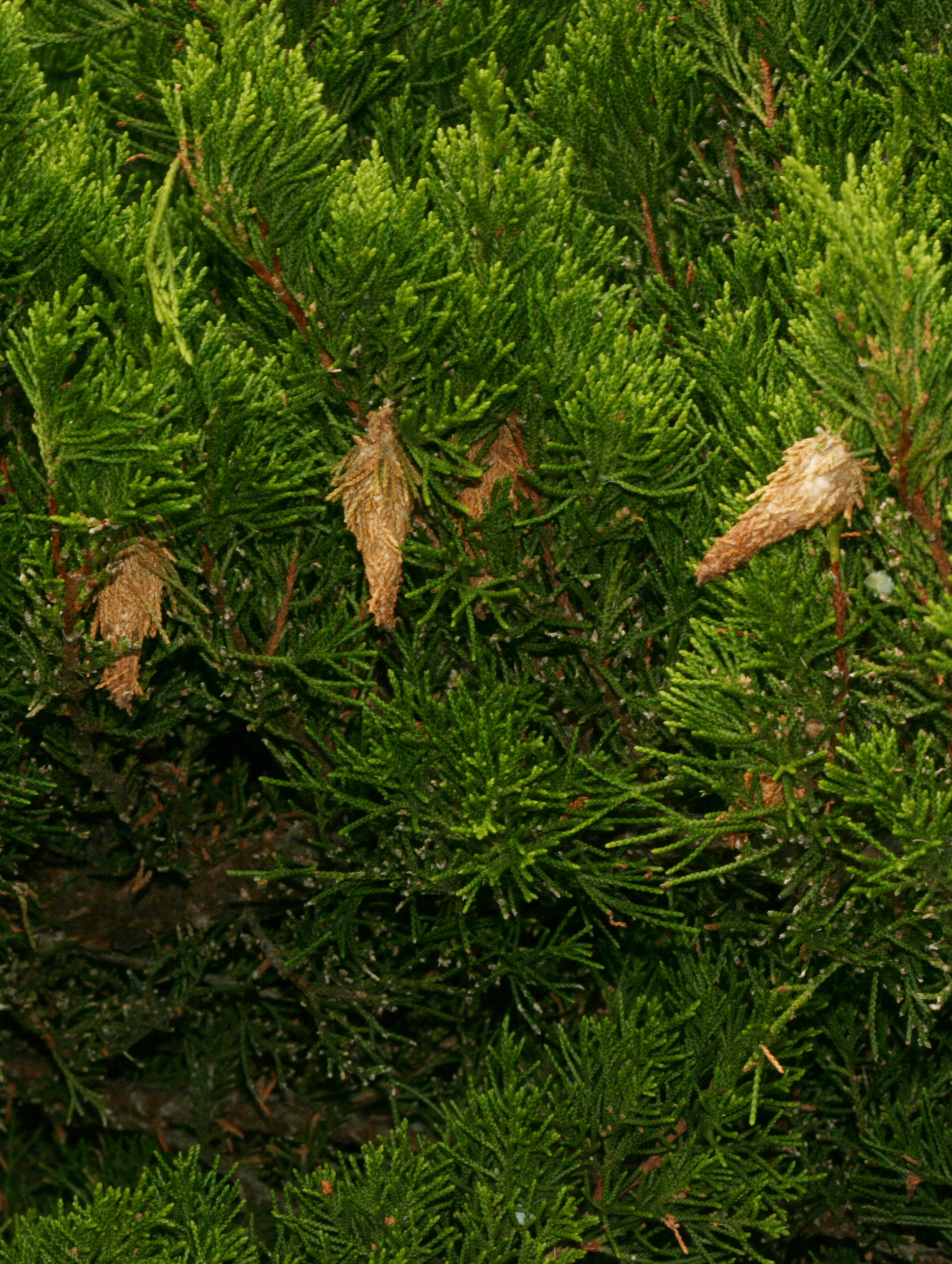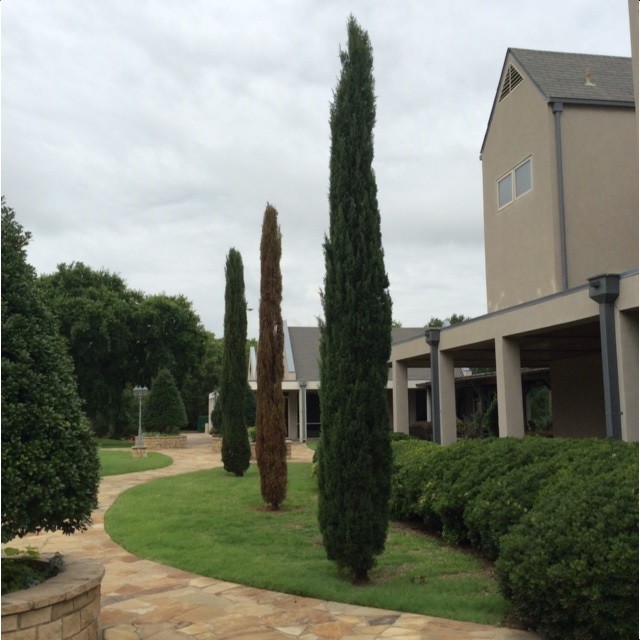
The brown, spindle shaped bags in this image are the cases of bagworms, a caterpillar that can be a pest in dozens of different trees.
You’ve been watching your arborvitae all summer and noticing brown, spindle-shaped sacs hanging from the branches. Someone points out to you that these are bagworms, a case-making caterpillar that feeds on leaves and can be highly damaging, especially to evergreen trees and shrubs like arborvitae and cedar.
Now it’s late September, what do you do?
Before I answer that question, it’s worth pointing out that bagworms are interesting insects with a decidedly non-traditional life cycle. Bagworms are not really worms, but caterpillars, the immature stages of a nondescript moth. They are called bagworms because, shortly after they are born, they begin spinning a silken case or sac around themselves, using silk from glands associated with their mouth. The case is added to continually as the caterpillar grows. The caterpillar feeds on the host plant by sticking its head and legs out of the top of the bag and chewing on nearby leaves. Its legs grasp the branch of the host plant, and propel the caterpillar like a kid cruising the monkeybars.

A now-empty case of a male bagworm is marked by the pupal “skin” left dangling from the bottom of the sac. The presence of these empty cases signals the end of a generation of bagworm feeding.
Bagworms have one generation each year in Texas (some species possibly two). Once the larvae are fully grown they stop feeding. Males pupate and emerge as adults, usually a little before the female. Adult male moths exit the bag through the bottom, and fly off in search of a mate. Females also pupate, but the adult female that emerges is eyeless, wingless and legless. She remains in her bag, emitting a pheromone to alert males to her presence. Male moths locate the female bags and mate. Once mated the female gestates her eggs and dies, leaving a bag full of eggs that will hatch the following spring.
Once both male and female bagworms enter this last phase of life, feeding is over and so is any chance for effective control with insecticides. Bagworm bags are made of tightly woven silk and bits of leaves from their food plant. For this reason, the caterpillars, pupae and eggs inside are well protected from insecticides. Only when actively feeding are bagworms vulnerable to insecticide sprays.
So it’s late summer. Is it too late to spray for bagworms? That’s a good question, and will require some close observation on your part. If you have a bagworm-infested tree, pull off as many bags as you can for a quick inspection. Do you see red-brown pupal skins sticking out from the bottoms of many of the cases? If so, this is an indication that pupation and mating by at least some of the bagworms has begun. Are the cases easy to pull off the tree, or are they tightly bound with thick silk? Cases with thick bands of silk attaching them to the branch are an indication that the caterpillar has started the process of pupation, mating or egg laying. Open up some cases with a pointed knife or scissors. Do you find caterpillars still in the cases? If so, a spray may be worthwhile. If most cases are empty, or have only pupal skins or eggs inside, you’ve missed your chance this year to treat.

Bagworms are slow to spread. Notice that the infestation damaging the middle tree has not yet spread to adjacent trees.
If you’ve missed your chance to spray this summer, that’s OK. Your bagworms will do no further damage this year. You have two options: wait until next spring to treat, or consider handpicking bags from trees during the winter or early spring.
Because female bagworms do not have wings, and there is only one generation a year, bagworm infestations are usually slow to spread. This means that on smaller trees, or trees that are deciduous (making the bags easy to spot), handpicking can sometimes eliminate or greatly reduce an infestation. Trees picked clean of bags are unlikely to become re-infested the following year.
Your other treatment option is to wait until spring when bagworms hatch (usually May to early June) to treat the tree. A relatively easy way to know the best time to treat emerging bagworms is to remove a number of bags from a tree and place outdoors in a screened jar in a shady spot. When the eggs hatch and young caterpillars are seen inside the jar, chances are that eggs are also hatching on your trees. Sprays such as Bacillus thuringiensis, spinosad and any of the pyrethroid insecticides are effective on bagworms, especially early in the season. Late season infestations, when bagworm caterpillars are larger and more difficult to kill, are best treated with pyrethroid sprays.
For more information on bagworms, including photos of many of the life stages, see the excellent publication by the University of Florida.